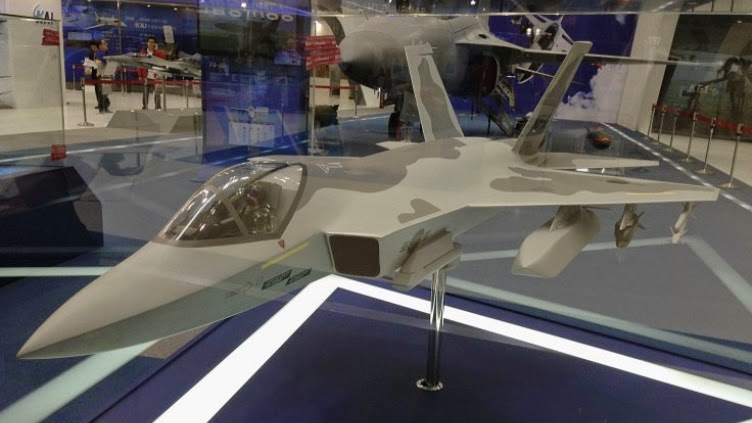South Korea-Indonesia sign up for next phase of KFX programme
South Korea and Indonesia have signed a joint engineering and development agreement for the Korean Fighter Experimental (KFX) 4.5-generation fighter, the Defense Acquisition Program Administration in Seoul announced on 6 October.
The agreement, which was signed in Surabaya by South Korean ambassador to Indonesia Cho Tai-young and Indonesian Defence Minister Purnomo Yusgiantoro, follows up a memorandum of understanding (MoU) signed in July 2010 and an April 2011 agreement that covered the initial two-year technical development phase of the programme.
Under the arrangement announced on 6 October, South Korea will pay 80% of the costs associated with the joint engineering and development phase of the KFX, with Indonesia paying the remaining 20%.
Officials from lead manufacturer Korea Aerospace Industries (KAI) have previously described the KFX as a single-seat, twin-engine, multirole aircraft equipped with stealth features, active electronically scanned array radar, and internal weapons carriage.
Under the 2010 MoU, Indonesian company PT Dirgantara will participate in the aircraft's development.
KAI officials have suggested that around 250 KFX combat aircraft could replace the Republic of Korea Air Force's ageing F-4E Phantom and F-5E Tiger II aircraft, and ultimately its F-16 Fighting Falcon platforms. A further 350 KFX aircraft could be exported, officials added.
The 6 October agreement calls for the establishment of a joint programme management office "to reduce the financial burden required to jointly develop the fighter by enhancing co-operation in design, prototype fabrication, test, and evaluation." Yonhap news agency put the total development cost at KRW8.5 trillion (USD8 billion): a significant increase on the USD5 billion quoted by officials in 2011 and more the KRW8 trillion quoted by KAI officials in January 2014.
COMMENT
Political concerns at the potential financial risks associated with the KFX led KAI to develop a single-engined version, dubbed the C501, that combined elements of the in-production FA-50 light fighter and the twin-engine KFX technology demonstrator, dubbed the C103. This was partly in response to a decision by the new South Korean government of President Park Geun-hye to suspend the KFX/IFX programme in early 2013.
However, in July 2014 the RoCAF and the Ministry of National Defense confirmed that KFX programme would go ahead with the twin-engine C103 design, technical development of which was completed in 2013.
Another key element of the KFX programme will be the involvement of Lockheed Martin, which has agreed to provide technical support for under the terms of the RoCAF's purchase of 40 F-35s under the FX-III acquisition. The arrangement is similar to the offsets that were agreed as part of Seoul's purchase of KF-16s: technology transfer that led directly to the development of the T-50 Golden Eagle lead-in fighter trainer and its derivatives.
A Lockheed Martin spokesman told IHS Jane's on 25 September that the F-35 deal's offset commitment would include "technical documentation, design expertise, and development investments. Specifically, Lockheed Martin will provide several hundred man-years of engineering expertise to assist Korea in the KFX design and development."
"Lockheed Martin will also provide several hundred-thousand pages of fighter aircraft technical documentation derived from existing Lockheed Martin programmes," the spokesman added.
From Jakarta's perspective, the KFX deal is the latest example of close military industrial ties with a country that has become an important supplier of - and market for - military equipment.
Indonesia is receiving 16 T-50 LIFT aircraft and Black Fox military vehicles produced by Doosan DST. South Korea's Daewoo Marine & Shipbuilding Engineering (DSME) has upgraded two Indonesian Cakra Type 209/1300-class submarines in South Korea and in December 2011 received a contract to supply three Chang Bogo-class Type 209/1200 diesel-electric attack submarines to the Indonesian Navy (Tentara Nasional Indonesia Angkatan Laut: TNI-AL).
For its part, Seoul has ordered eight licence-produced CN235 aircraft from PTDI for the RoCAF and four maritime patrol variants for its coastguard.
[IHS Jane's Defence Weekly ] by James Hardy, London/07 October 2014

댓글 없음:
댓글 쓰기